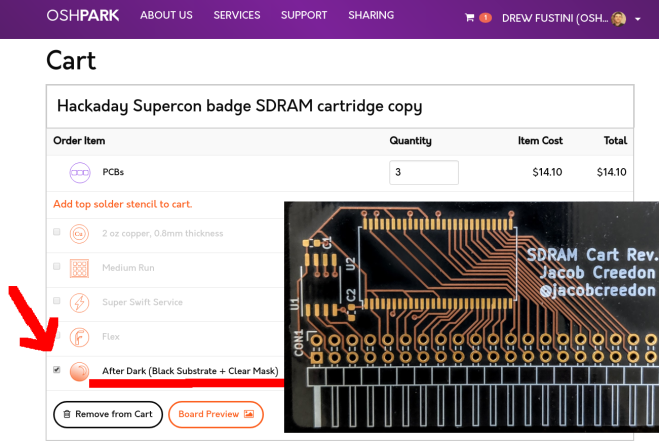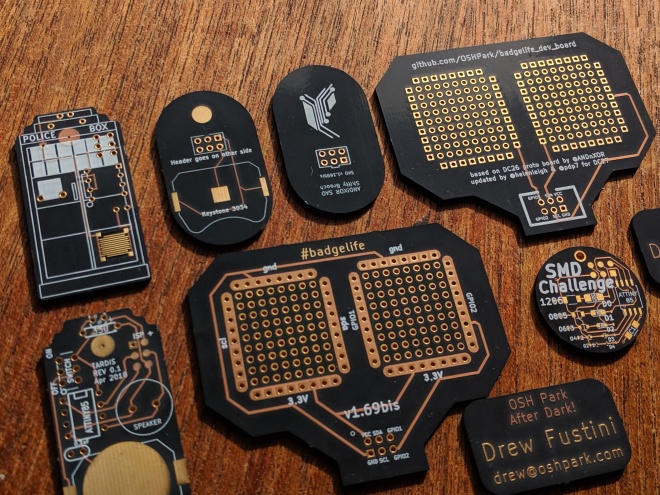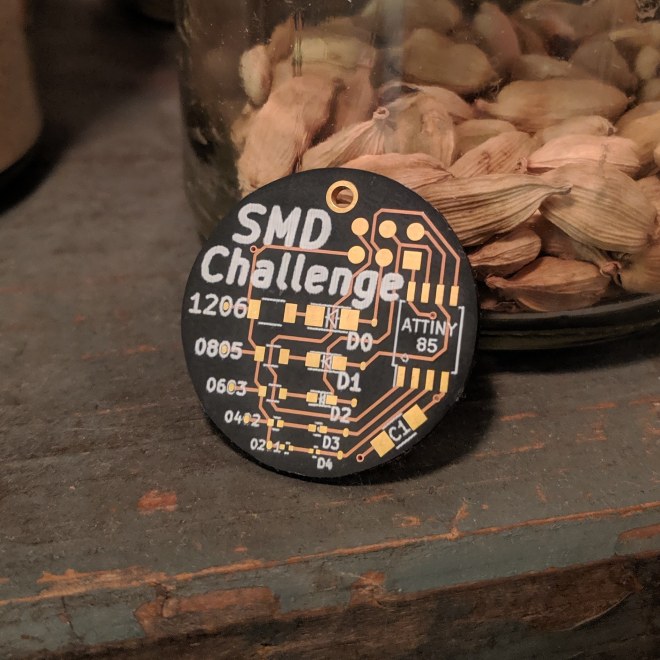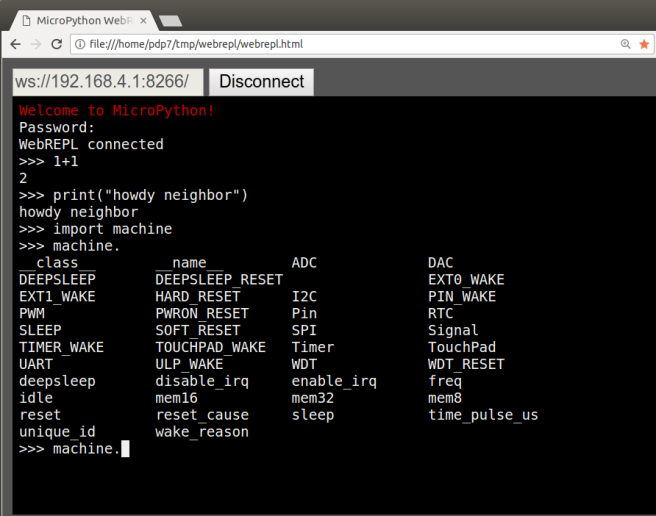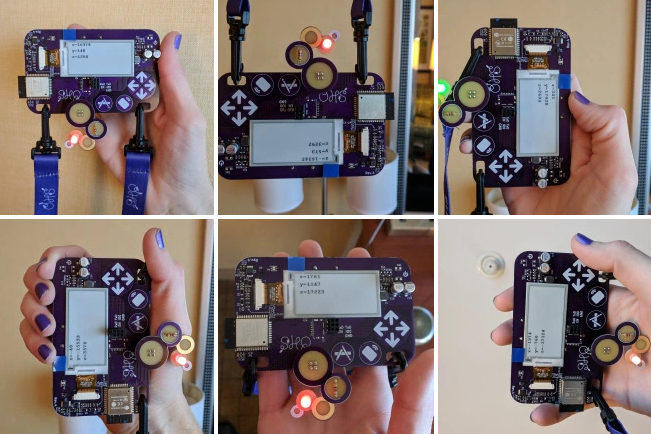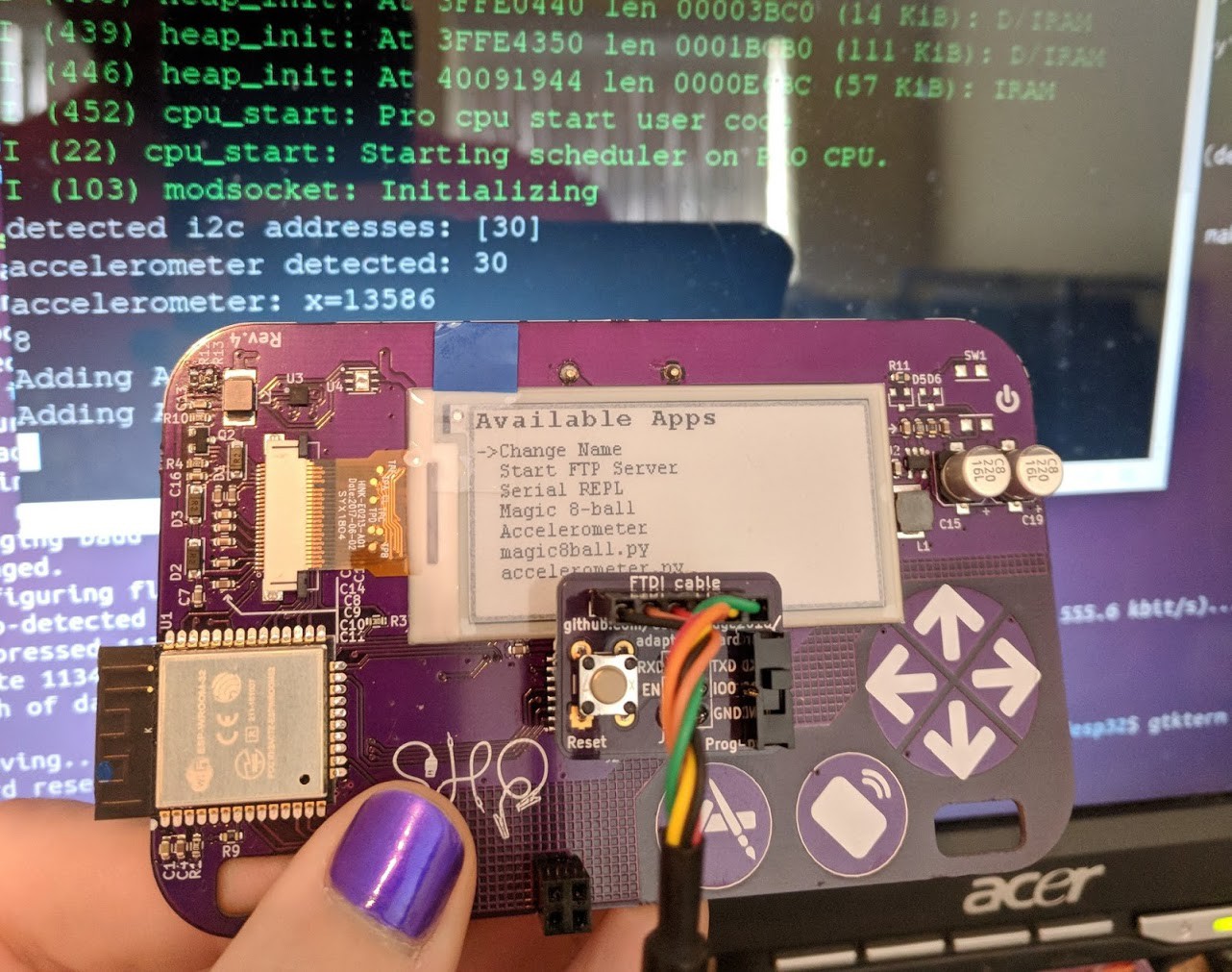Thanks to @Steve Pomeroy for creating this MicroPython demo app for the Open Hardware Summit badge:
# created by Steve Pomeroy https://hackaday.io/xxv
# modified by Drew Fustini to run once and exit
#
# blog post:
# https://blog.oshpark.com/2018/10/04/open-hardware-summit-badge-magic-8-ball-app/
#
# photo gallery:
# https://photos.app.goo.gl/f1y8PSHfYAaa4xTu7
#
# transfer to Open Hardware Summit badge using FTP:
# https://oshwabadge2018.github.io/docs.html#uploading-over-ftp
import gxgde0213b1
import font16
import font12
from machine import I2C, Pin, TouchPad
import struct
import time
import urandom
from ohsbadge import epd
from ohsbadge import fb
class TouchButton(object):
def __init__(self, pin, on_pressed, threshold=400, debounce_ms=50):
self._touchpad = machine.TouchPad(pin)
self._on_pressed = on_pressed
self._threshold = threshold
self._debounce_ms = debounce_ms
self._down_ms = None
self._pressed = False
def read(self):
if self._touchpad.read() self._debounce_ms:
self._on_pressed()
self._pressed = True
else:
self._pressed = False
self._down_ms = None
# from Magic 8-Ball app by Steve Pomeroy https://hackaday.io/xxv
# github.com/oshwabadge2018/ohs18apps/blob/master/magic8ball.py
class MagicBall():
def clear_screen():
epd.initPart()
epd.clear_frame(fb)
epd.display_frame(fb)
def show_message(message):
epd.init()
epd.clear_frame(fb)
epd.display_string_at(fb, 0, 52, message, font16, gxgde0213b1.COLORED)
epd.display_frame(fb)
def read_accel(i2c):
i2c.writeto_mem(30, 0x18, b'\x80')
x = struct.unpack("h", i2c.readfrom_mem(30, 0x6, 2))
y = struct.unpack("h", i2c.readfrom_mem(30, 0x8, 2))
z = struct.unpack("h", i2c.readfrom_mem(30, 0xA, 2))
return (x[0], y[0], z[0])
def get_orientation(i2c):
new_orientation = None
pos = MagicBall.read_accel(i2c)
if pos[2] > 13000:
new_orientation = "upright"
elif pos[2] < -13000:
new_orientation = "prone"
return new_orientation
def main(f):
phrases = ["It is certain.", "It is decidedly so.", "Without a doubt.", "Yes - definitely.", "You may rely on it.", "As I see it, yes.", "Most likely.", "Outlook good.", "Yes.", "Signs point to yes.", "Reply hazy, try again", "Ask again later.", "Better not tell you now.", "Cannot predict now.", "Concentrate and ask again.", "Don't count on it.", "My reply is no.", "My sources say no.", "Outlook not so good.", "Very doubtful."]
i2c = machine.I2C(scl=Pin(22), sda=Pin(21))
epd.init()
epd.set_rotate(gxgde0213b1.ROTATE_270)
epd.clear_frame(fb)
epd.display_frame(fb)
prev_orientation = None
keep_on = [True]
def exit_loop():
keep_on[0] = False
exit_button = TouchButton(Pin(32), exit_loop)
while keep_on[0]:
exit_button.read()
orientation = MagicBall.get_orientation(i2c)
if orientation and orientation != prev_orientation:
if orientation == 'upright':
MagicBall.show_message(urandom.choice(phrases))
elif orientation == 'prone':
MagicBall.clear_screen()
prev_orientation = orientation
ball = MagicBall()
ball.main()
This Python file can be transferred to Open Hardware Summit badge using the FTP server built into the MicroPython firmware.
Resources:
